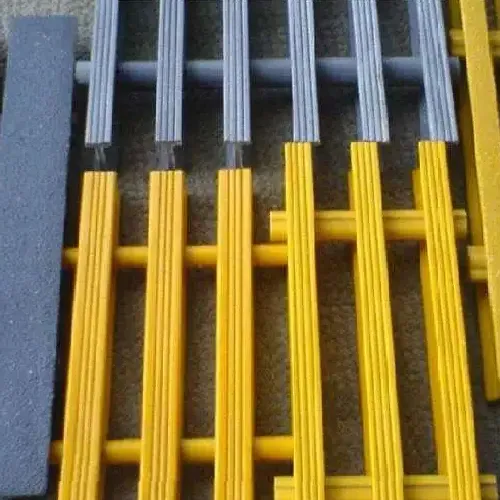loading...
- No. 9, Xingyuan South Street, Dongwaihuan Road, Zaoqiang County, Hengshui, Hebei, China
- admin@zjcomposites.com
- +86 15097380338
- Welcome to visit our website!
frp treads
Understanding FRP Treads An Innovative Solution for Safety and Durability
In today's fast-paced world, the importance of safety and efficiency in various industries cannot be overstated. One critical area that requires special attention is the design and materials used in constructing stairways, ladders, and walkways. A significant innovation in this field is the adoption of Fiber Reinforced Polymer (FRP) treads. These treads offer a myriad of benefits, making them an essential component in modern construction and industrial applications.
What are FRP Treads?
FRP treads are components made from a composite material composed of polymer resin reinforced with fiberglass. This combination results in a lightweight yet highly durable product. FRP treads are typically used on staircases, ramps, and walkways where safety and longevity are paramount. The unique properties of FRP make it an attractive choice compared to traditional materials like wood or metal.
Advantages of FRP Treads
1. Durability One of the main advantages of FRP treads is their impressive durability. Unlike wood, which can rot, and metal, which may corrode, FRP treads are resistant to both moisture and chemicals. This characteristic makes them ideal for use in harsh environments, such as chemical plants, food processing facilities, and outdoor settings.
2. Lightweight FRP treads are significantly lighter than their metal counterparts, making them easier to handle and install. This reduces labor costs and the overall time required for installation, providing a cost-effective solution for businesses.
3. Safety Features Safety is a primary concern in environments where slips and falls can lead to serious injuries. FRP treads are designed with anti-slip surfaces that provide excellent traction, even when wet. This feature is crucial in preventing accidents in high-traffic areas.
frp treads

4. Low Maintenance Maintaining traditional materials can be a cumbersome and costly task. With FRP treads, maintenance is minimal. They do not require regular staining, sealing, or painting, allowing facilities to allocate resources elsewhere.
5. Versatility FRP treads can be prefabricated into various shapes and sizes, making them adaptable for different applications. Whether it's a simple staircase, wide industrial stairways, or custom-designed walkways, FRP treads can be tailored to meet specific requirements.
6. Environmental Considerations In an era where sustainability is increasingly vital, using FRP treads can contribute to environmentally friendly practices. Many FRP products are made from recycled materials, and their long lifespan means fewer replacements over time, reducing waste.
Applications of FRP Treads
The applications for FRP treads are vast and diverse. They are commonly used in industrial settings, including manufacturing plants, warehouses, and storage facilities where heavy loads are frequent. Additionally, they find their place in commercial buildings, schools, and hospitals, where safety and longevity are critical.
FRP treads are also an ideal choice for outdoor applications like parks, marine docks, and waterfronts, where exposure to weather elements can compromise the integrity of conventional materials. Their resistance to UV rays ensures that they maintain their appearance without fading over time.
Conclusion
In summary, the demand for FRP treads is growing due to their numerous advantages over traditional materials. Their combination of durability, safety, low maintenance, and environmental benefits makes them an outstanding choice for a wide range of applications. As industries continue to seek innovative solutions that prioritize safety and efficiency, FRP treads are emerging as a front-runner. Investing in this advanced material not only enhances safety but also contributes to long-term economic savings and sustainability in construction and industry practices. As we move forward, FRP treads will undoubtedly play a pivotal role in shaping future architectural and industrial designs.
-
Transform Your Spaces with FRP Grating SolutionsNewsNov.04,2024
-
The Versatility and Strength of FRP RodsNewsNov.04,2024
-
The Excellence of Fiberglass Water TanksNewsNov.04,2024
-
The Benefits of FRP Grating for Your ProjectsNewsNov.04,2024
-
Elevate Your Efficiency with FRP Pressure VesselsNewsNov.04,2024
-
Welcome to the World of FRP Pressure VesselsNewsOct.12,2024
-
Unveiling the Future of Filtration: Why FRP Filter Vessels are a Game ChangerNewsOct.12,2024
